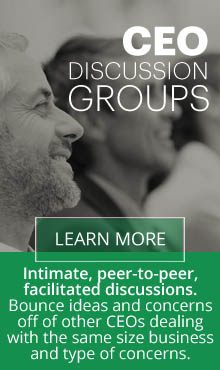 Imagine that you are enclosed in a see-thru bubble. It encompasses you and everything that is comfortable for you to do. All your habits that are convenient are in your comfort zone bubble. How you interact with people in your workplace or your home, the smiles, the intelligent answers, the work that you do, the level of effort you put in, your attitudes are all in this bubble. All those actions that come easily, those automatic responses, those things that you do everyday without thinking about them, they are all in there. Researchers says that 88% of what we do everyday is done on autopilot. Also included in your autopilot comfort zone are responses where somebody pushes your buttons and you react with defensiveness or anger. Or perhaps you need to eat to make yourself feel better, or you get stuck in status quo thinking. Deeply entrenched patterns both positive and negative developed over a lifetime are part of your comfort zone bubble.
Imagine that you are enclosed in a see-thru bubble. It encompasses you and everything that is comfortable for you to do. All your habits that are convenient are in your comfort zone bubble. How you interact with people in your workplace or your home, the smiles, the intelligent answers, the work that you do, the level of effort you put in, your attitudes are all in this bubble. All those actions that come easily, those automatic responses, those things that you do everyday without thinking about them, they are all in there. Researchers says that 88% of what we do everyday is done on autopilot. Also included in your autopilot comfort zone are responses where somebody pushes your buttons and you react with defensiveness or anger. Or perhaps you need to eat to make yourself feel better, or you get stuck in status quo thinking. Deeply entrenched patterns both positive and negative developed over a lifetime are part of your comfort zone bubble.
It’s good to have this bubble because if we had to make a zillion choices a minute, we would get really bogged down. It’s great that we’ve created these habits based on what’s worked in the past. These ingrained habits are what the rest of the world sees. What we all don’t see is that these neural pathways have become speedways in the brain. Our neurons used in comfort zone behaviors have developed shortcuts and speedways. The more we practice these habits the more we strengthen the speedways among the neural connections, so they get even more ingrained. Did you ever watch a child who is learning to tie her shoes? Her fingers fumble and she has to think through each step painstakingly. Little by little the neural pathways get established, each movement gets easier and linked to the prior movement. In a while she is accomplishing the whole sequence of movements, and then the movements get faster and faster. Then she can do it without even watching, and even while her brain is focused on having a conversation with somebody else.
But patterns developed at an early age are not always appropriate for us to use today. In fact patterns that dealt with an economic world pre2008 may not be effective today. If we want to change and have improved results personally and professionally, we have to reach outside our current comfort zone bubble and develop new behaviors. We have to expand the comfort zone bubble to include new actions. Perhaps we want to think bigger, communicate differently, be more positive, achieve more sales, organize our time better or manage others better. To develop this new behavior, most people will start with a goal. It’s an intention to do something new and build a new habit. That means the new habit and, therefore, a new neural pathway needs to be built and used so often that it replaces the old neural pathway. Does this produce anxiety and discomfort? It sure does. The discomfort felt is in direct proportion to how ingrained the old pattern is. That’s why it’s often said that the ‘breakdown happens right before the breakthrough.’ That’s why breaking a habit and substituting a new behavior takes practice. It normally takes some time to change the neural pathways to develop new speedways. It takes repetition. It takes commitment to work through the uncomfortable stage till the new behavior becomes part of the comfort zone bubble.
So how does this apply to you? When you determine that you want to achieve a goal, plan on it generating some discomfort. Look at that discomfort as a necessary part of the process. Plan on what you will do or say to yourself when those times of doubt occur. Assess your commitment now. Are you willing to deal with some anxiety and push through it to be successful? Will you need tools like a journal or a vision board (a collection of pictures that help you see yourself with the goal accomplished) or a mind movie (same thing with moving images and music)? Be realistic about the time frame required to practice and establish the neural pathways. Plan on making mistakes and falling back into old habits occasionally as you strive to change those behaviors. Be kind and forgiving to yourself, realize this is part of the process. And then just start again and make progress in small increments.
Creating that neural pathway in your brain to get the new behavior ingrained and internalized is like exercising a muscle. It builds up little by little. It requires your time and attention just like the child learning to tie her shoe laces. Once that new behavior is part of your comfort zone bubble, celebrate. Pat yourself on the back. Feel good and assimilate both your new behavior and your ability to change into your self-image. Feel your self-confidence grow. Then get focused on expanding your comfort zone bubble again with a new goal. You are on a self-growth path that will have a ripple effect on yourself and those around you.

 Jeri Quinn from Driving Improved Results is an executive coach, management consultant, speaker and author who focuses on communication in her work with executives and companies. She is the author of The Customer Loyalty Playbook, 12 Game Strategies to Drive Improved Results in Your Business. With more than 40 years as a serial entrepreneur.
Jeri Quinn from Driving Improved Results is an executive coach, management consultant, speaker and author who focuses on communication in her work with executives and companies. She is the author of The Customer Loyalty Playbook, 12 Game Strategies to Drive Improved Results in Your Business. With more than 40 years as a serial entrepreneur.

